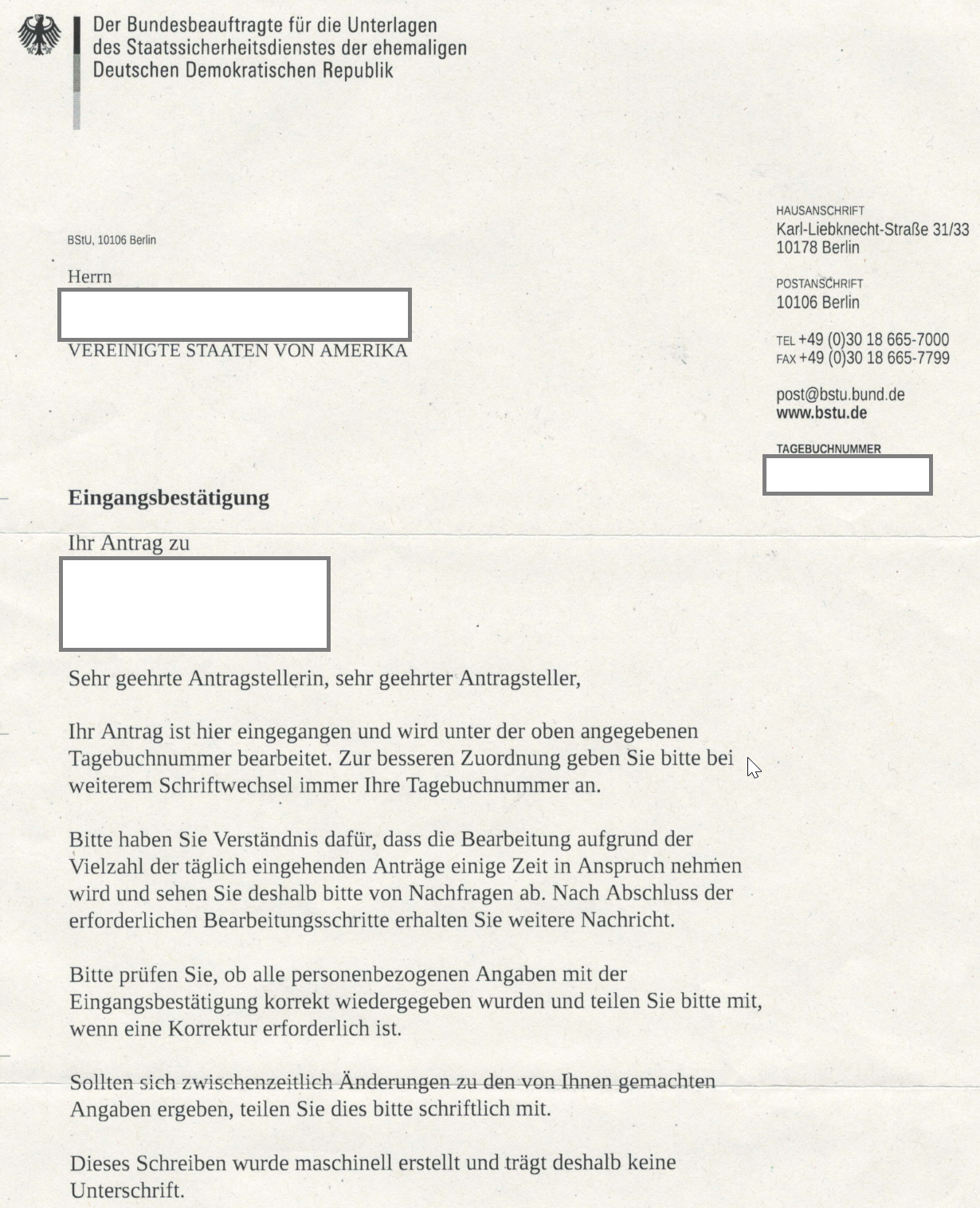Summary: Considering the Stasi
To this point, my blog entries have mostly avoided the subject of the Stasi (short for “Ministerium für Staatssicherheit” or administration for state security).

I’ve focused mainly on my day-to-day experiences in the DDR. But what role did the Stasi play in my life and that of my East German peers?
The notorious and much-feared Stasi cast a long shadow over many citizens, but it is hard to know how much of that fear was based on fact versus imagination. Since we were fewer than a dozen Westerners in a socialist state, we had to assume people were watching our movements and possibly listening in on our conversations and phone calls.
Informants might have included classmates and teachers, but we never knew. Some of my U.S. classmates speculated about which of the locals we knew might be a Stasi informant, but I wasted no energy on such thoughts.
I had no way of knowing, I felt I had nothing to hide, and I was there to experience and learn what I could … not limit myself by fears either real or imagined.
As I’ve written earlier, people were mostly relaxed in their homes and sometimes the dorms, and willing to express dissatisfaction with government corruption and oppression, limits on travel, the hated Soviet soldiers stationed in their country, being compelled to study the Russian language, and more.
In public, people were more guarded and limited conversation to mundane topics. If there were informants and people following my movements, they were not obvious.
Unlike tours in China, Iran, or the former Soviet Union, where every group of visitors was accompanied by an official minder, we were free to come and go as we pleased, without any chaperone or minder.
We were regularly warned, however, not to photograph bridges, train stations, shipyards, or any other major “strategic” installations. I snuck one or two, careful to keep an eye out for anyone who might catch me and rip the film from my camera. That never came close to happening.

The Berlin Wall fell in November 1989, only a few months after I had returned to the states. The Stasi headquarters were ransacked and Stasi files made public. At that point, many former East Germans found out which of their fellow citizens had collaborated with the Stasi. Here are a few articles with such stories:
The Stasi files: Germany’s 600-million-piece puzzle
East German Stasi files open to public online for first time
Stasi Files Revisited: The Banalities and Betrayals of Life in East
Some of my U.S. classmates requested their Stasi files. Several were told there were no files; they either had been lost or destroyed, or perhaps there had never been any.
One student I had known received an extensive file that included detailed information about where she had hung out, whom she dated, etc. We’ve speculated that since she had relatives who were East German, she may have been more of a target for surveillance.
I resisted requesting my Stasi files for decades. I didn’t want to know if any of my classmates had been informants. If they had, would it have been due to malice or coercion?
But thirty years have passed, and it has become much easier to request your Stasi files. You don’t even need to know German.

So I sent in my official request. I just received official notice that my application has been received. I’m keeping my expectations low; it has been 30 years, and since no files turned up for a couple of my classmates, I won’t be surprised if none are located on me.
